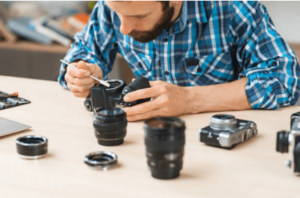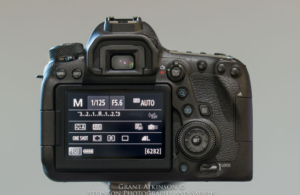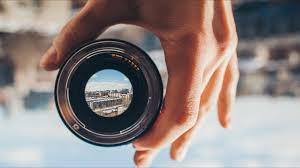How Adjusting ISO Settings on DSLR Cameras Solves Problems That Changing Aperture Settings
In the world of DSLR photography, understanding the interplay between ISO settings, aperture, and shutter speed is crucial for capturing the perfect shot. Each of these settings plays a unique role in determining the exposure and quality of your images. While changing aperture affects the depth of field and the amount of light entering the camera, adjusting ISO settings can solve specific problems that aperture adjustments cannot. This article delves into the distinct advantages of ISO adjustments and the limitations of aperture changes, highlighting how each setting can be used to achieve optimal photographic results.
Understanding ISO Settings
ISO stands for International Organization for Standardization, but in the context of photography, it refers to the sensitivity of your camera’s sensor to light. The ISO setting is one of the three pillars of the exposure triangle, alongside aperture and shutter speed.
How ISO Affects Exposure
Increasing the ISO value makes the camera sensor more sensitive to light, which means you can capture well-exposed images in low-light conditions without needing a longer exposure time or a wider aperture. Conversely, lowering the ISO reduces the sensor’s sensitivity, which is ideal for bright conditions to prevent overexposure.
The Trade-off: Noise
One significant trade-off when increasing ISO is the introduction of noise or graininess in the images. High ISO settings can lead to less detailed images with visible noise, especially in darker areas of the photograph. Modern DSLR cameras, however, have improved significantly in handling high ISO settings with less noise.
Understanding Aperture Settings
Aperture refers to the opening in a lens through which light passes to enter the camera. It is measured in f-stops (e.g., f/2.8, f/4, f/8), and it directly affects the depth of field and exposure.
How Aperture Affects Exposure
A larger aperture (a lower f-stop number) allows more light to enter the camera, which is beneficial in low-light conditions. It also creates a shallow depth of field, making the subject stand out against a blurred background. A smaller aperture (a higher f-stop number) lets in less light and increases the depth of field, keeping more of the scene in focus.
Limitations of Aperture Adjustments
While adjusting the aperture is effective for controlling exposure and depth of field, it has limitations. A very wide aperture can result in a depth of field that is too shallow, causing important elements of the image to be out of focus. Conversely, a very small aperture might require longer exposure times, risking motion blur if the subject or camera moves.
Problems Solved by Adjusting ISO That Aperture Changes Cannot
1. Low-Light Situations Without Changing Depth of Field
In low-light conditions, you often need to increase the exposure to capture a clear image. While opening up the aperture can achieve this, it simultaneously reduces the depth of field, which might not be desirable for all shots. By increasing the ISO, you can achieve proper exposure without altering the depth of field, maintaining the intended composition and sharpness throughout the image.
2. Avoiding Motion Blur
When photographing moving subjects, using a fast shutter speed is essential to prevent motion blur. In situations where the ambient light is low, a fast shutter speed might not allow enough light to hit the sensor, resulting in an underexposed image. Increasing the ISO compensates for the reduced light, allowing you to use a fast shutter speed without compromising exposure, something adjusting the aperture alone cannot always achieve.
3. Maintaining Optimal Aperture for Sharpness
Every lens has an optimal aperture range, often between f/8 and f/11, where it produces the sharpest images with the least amount of aberration and diffraction. If you are forced to open up the aperture to f/2.8 or f/4 to increase exposure, you might sacrifice image sharpness and introduce lens aberrations. By increasing the ISO, you can keep the aperture within its optimal range, ensuring maximum sharpness and quality.
4. Flexibility in Depth of Field Control
There are times when you need a specific depth of field for artistic or compositional reasons. For instance, landscape photography typically requires a large depth of field to keep the entire scene in focus. In low light, opening the aperture wide enough to achieve proper exposure would reduce the depth of field, making parts of the scene blurry. Increasing the ISO allows you to maintain a smaller aperture for greater depth of field without underexposing the image.
5. Indoor and Event Photography
Indoor and event photography often involves challenging lighting conditions. Venues may have dim lighting, and the use of flash can be disruptive or prohibited. In such scenarios, increasing the ISO is a practical solution to achieve well-exposed images without relying on artificial lighting or compromising on the depth of field.
Balancing ISO with Other Settings
While increasing ISO is beneficial in many situations, it’s crucial to balance it with aperture and shutter speed to achieve the best results.
ISO and Shutter Speed
A higher ISO allows for faster shutter speeds, which is beneficial for freezing motion in sports or wildlife photography. However, it’s important to find a balance where the ISO is high enough to allow a fast shutter speed but not so high that it introduces unacceptable noise levels.
ISO and Aperture
Balancing ISO with aperture settings allows you to control both exposure and depth of field effectively. For example, in portrait photography, you might want a wide aperture (e.g., f/2.8) to create a blurred background but also need a high ISO to ensure the subject is well-lit without a slow shutter speed that could cause motion blur.
Technological Advances in ISO Performance
Modern DSLR cameras have made significant advancements in ISO performance, reducing the noise typically associated with high ISO settings.
Improved Sensor Technology
Advancements in sensor technology have greatly improved the performance of high ISO settings, allowing photographers to use higher ISO values with minimal noise. This improvement has made it possible to capture high-quality images in low-light conditions without relying heavily on external lighting.
Noise Reduction Algorithms
Camera manufacturers have developed sophisticated noise reduction algorithms that work in-camera to reduce the amount of noise in high ISO images. These algorithms process the image data to minimize noise while preserving detail, resulting in cleaner images at higher ISO settings.
Practical Tips for Using ISO Settings
1. Start with the Lowest ISO
Begin by setting your camera to the lowest native ISO setting (usually ISO 100 or 200). This ensures the highest image quality with minimal noise. Only increase the ISO when necessary to achieve proper exposure.
2. Test Your Camera’s ISO Performance
Every camera handles high ISO settings differently. Spend time testing your camera’s performance at various ISO levels to understand its limits and determine the highest ISO setting you are comfortable using for your work.
3. Use Noise Reduction Software
In addition to in-camera noise reduction, consider using post-processing software like Adobe Lightroom or DxO PhotoLab, which offers advanced noise reduction tools to clean up high ISO images further.
4. Consider the Final Output
Think about how your images will be used. For online sharing or small prints, slight noise at higher ISO settings may not be noticeable. For large prints or professional work, you may need to be more conservative with your ISO settings to ensure the highest image quality.
Understanding how a DSLR camera adjusts its lens to focus on different distances is essential for photographers aiming to capture sharp and well-focused images. This process involves sophisticated auto-focus mechanisms that allow the camera to quickly and accurately determine the optimal focus point.
To dive deeper into the technical aspects of DSLR focusing, read our detailed article: How Does a DSLR Camera Adjust Its Lens to Focus on Different Distances?.
Additionally, when adjusting settings on a DSLR, it’s important to know the specific issues that can be resolved by changing ISO settings compared to aperture adjustments. For example, adjusting the ISO can significantly impact low-light performance without affecting depth of field, which is something changing the aperture cannot achieve on its own. For more information on this, check out our article: With DSLR cameras, what problem does adjusting ISO settings solve that changing aperture settings does not?.
Conclusion
Understanding the unique roles of ISO and aperture in DSLR photography is essential for mastering exposure and achieving the best possible image quality. While adjusting the aperture is effective for controlling depth of field and light entry, it has limitations that ISO adjustments can overcome. Increasing the ISO provides a flexible solution for low-light conditions, maintaining optimal aperture settings, and avoiding motion blur, all without compromising the depth of field or sharpness.
By mastering ISO settings and knowing when to use them, photographers can capture stunning images in a variety of challenging lighting situations. Embrace the technological advancements in modern DSLR cameras and use ISO adjustments to enhance your photography, ensuring you never miss a moment due to poor lighting conditions.
RELATED POSTS

How Can You Fix Focus Issues in a Camera Lens That Consistently Produces Soft or Blurry Images?

How Photographers Can Optimize Their Use of Multifunctional Control Dials for Faster Adjustments ?

What are the essential features to look for when buying a lens?


One thought on “With DSLR cameras, what problem does adjusting ISO settings solve that changing aperture settings does not?”